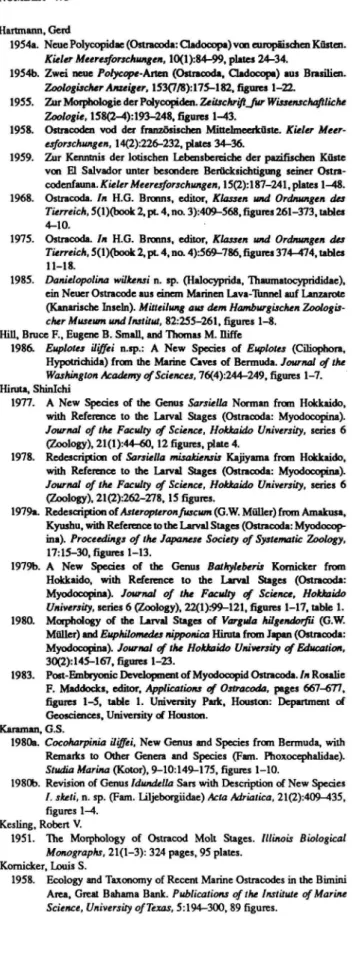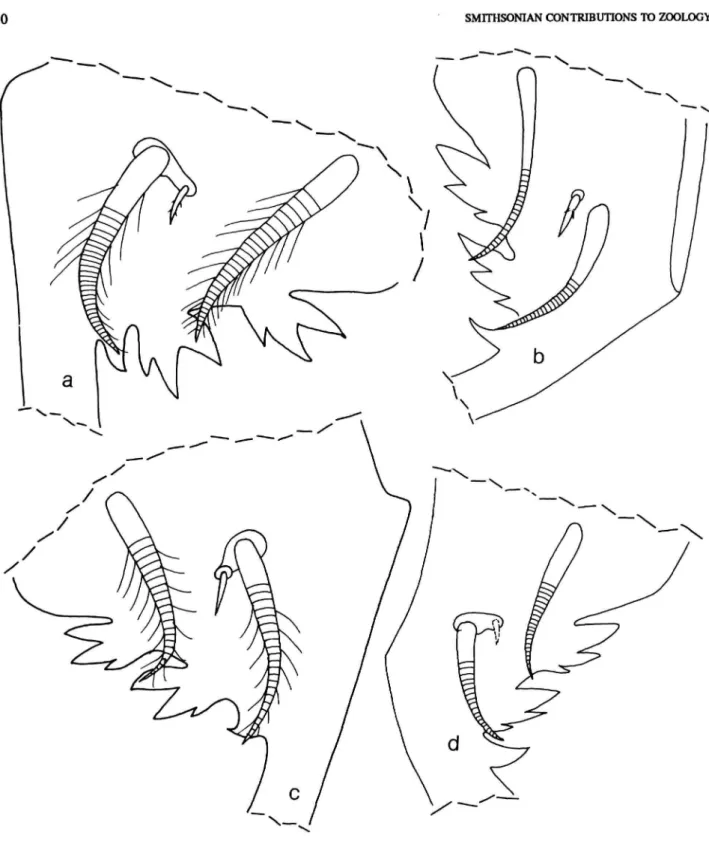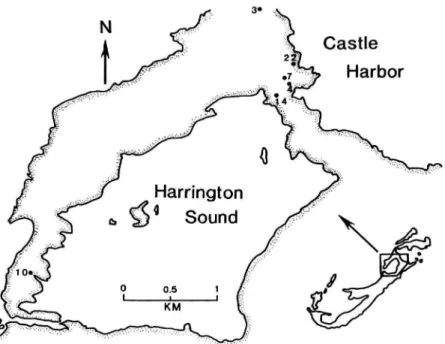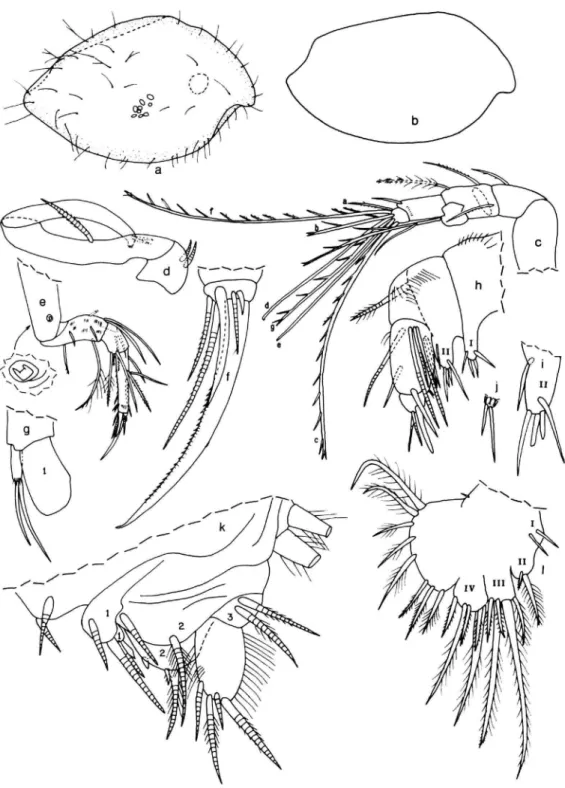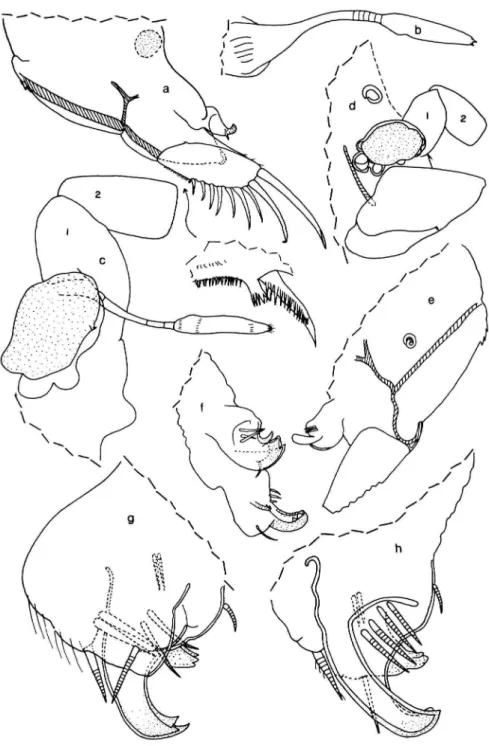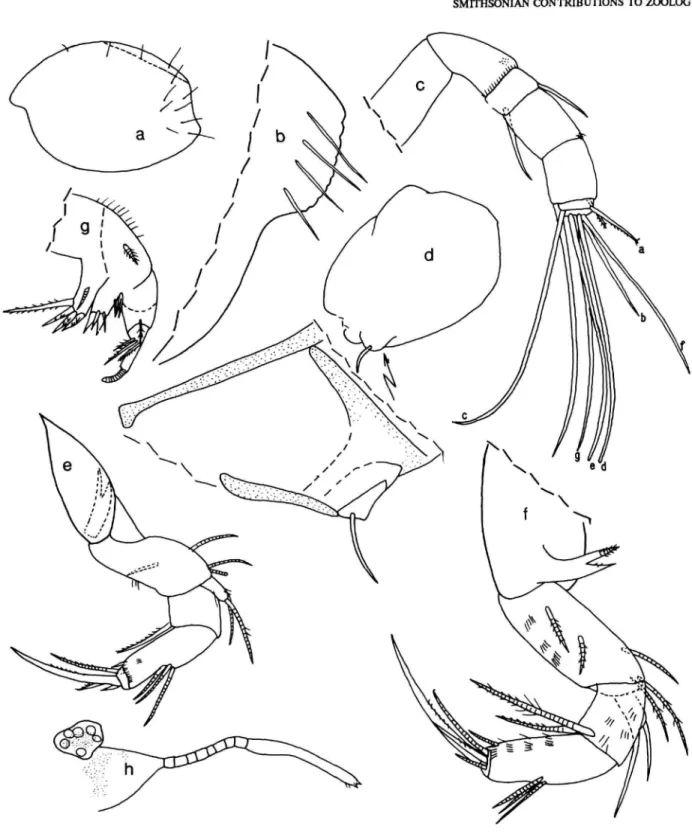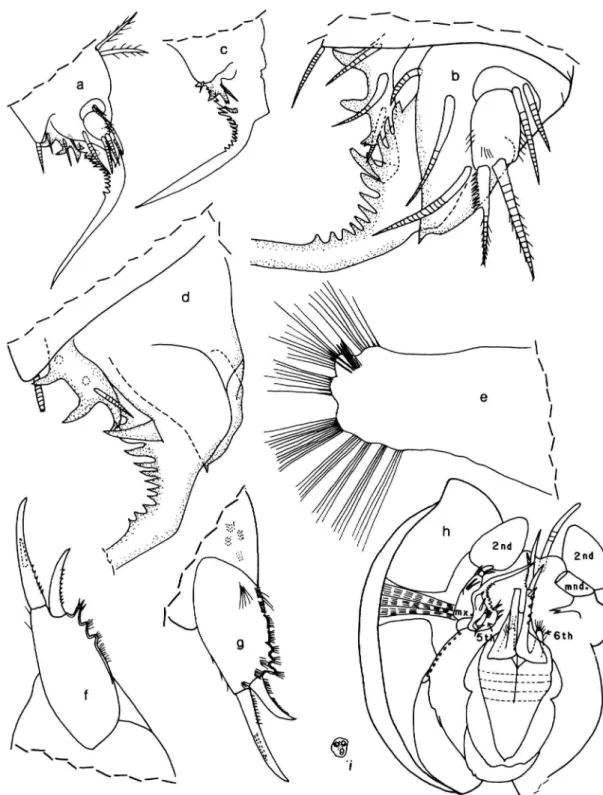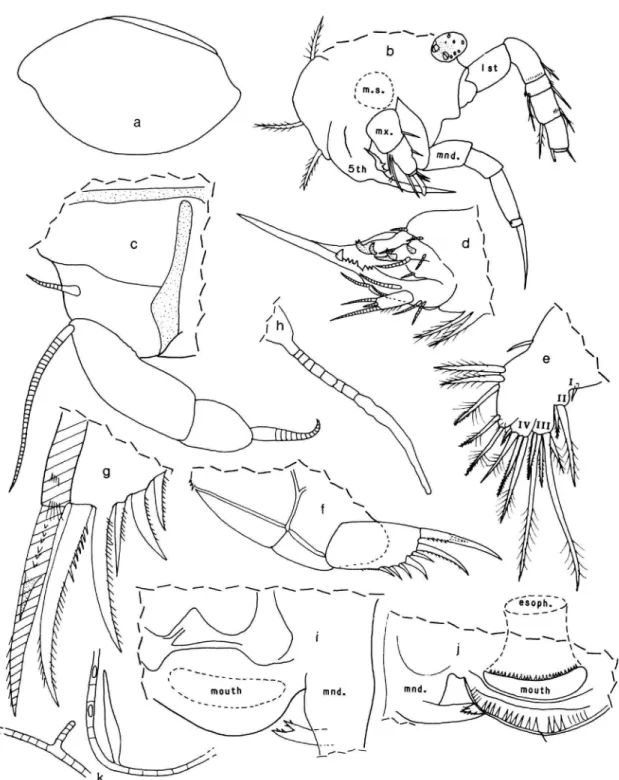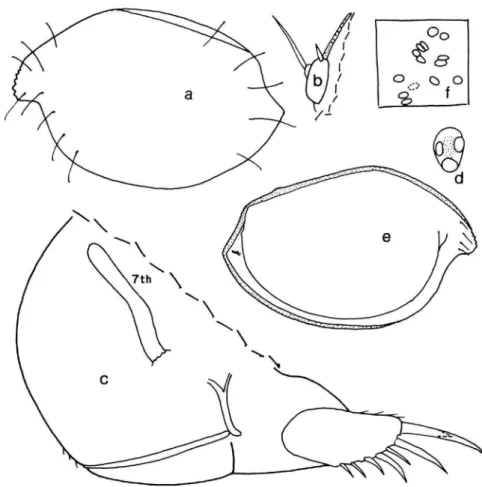Emerald Sink Cave is located south of the Palm Cave System and may or may not be part of it. Two other caves, the Bee Pit and Walsingham Sink Caves, are located in the immediate vicinity of the submerged passages that connect. Other caves, such as parts of the Walsingham Cave System, are also important vectors for tidal exchange.
Current flow appears to be a function of the relationship of the cave pool or passage with the sea. The range of selected cave features in which Myodocopa was collected is given in Table 5. Pseudophilomedes kylix has eyes that are typically present in shallow-water species of the genus and is unlikely to be troglobitous.
Eusarsiella styx has eyes similar to those of shallow-water species of the genus and is unlikely to be a troglobite. This supports the inclusion of the suborders Mydocopina, Halocypridina and Qadocopina in the superorder Myodocopa.
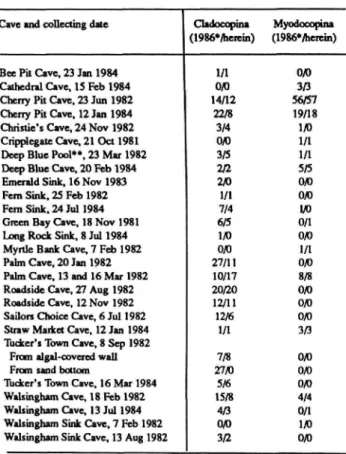
Harbor
1st endopodial joint with medial spines forming rows, and 3 ventral setae (longest setae with long spines midway and short spines distally; shorter setae with short marginal spines). 1st exopodial joint with 2 teeth: proximal tooth with 3 teeth and 3 bristles (Figure 6c); distal tooth with 2 teeth and 1 proximal bristle (Figure 6b). Terminal joint with 7 setae along the margin (anterior 5 with long proximal and short distal spines, posterior 2 hairy to the tip).
1st endopodial joint with 3 ventral setae (1 short and 1 long (medial) with short marginal spines, 1 long (lateral) with long spines medially and short spines distally). 2nd exopodial joint with 2 ring-like proximal setae on posterior side (1 near 1st joint, glabrous; 1 in middle of joint, proximally hairy), 1 small toothed seta without rings on inner margin and 2 terminal setae (1 ring-like, hairy, 1 minute). Exopodite similar to adult male except joint 9 with only 2 setae (dorsal seta small with slender spines or hairs; ventral seta with strong proximal ventral setae becoming more slender distally along setae and followed by whorl hairs, dorsal margin with slender setae just proximal to the garden hair).
Terminal joint with 2 claws (middle claw about half length of lateral claw, both with ventral teeth) and 2 annular setae. Male endopodite in stage III has a short anterior seta on the 1st joint, a long 2nd joint with a long proximal seta, and a short 3rd joint with a short terminal seta. Mandibles III. and IV. stages are similar to those of an adult female.
Terminal joint with strong claw-like setae (with proximal medial spines forming row), 1 short ventral seta and 2 minute medial setae near base of claw-like setae (Fig. \5g).
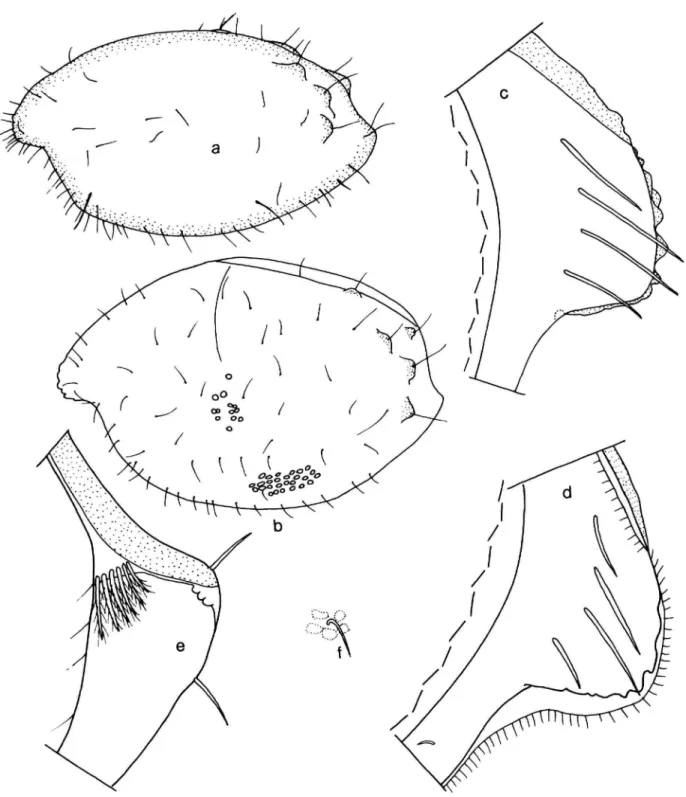
Castle Harbor
DESCRIPTION OF ADULT MAN (figures 21-23). - Carapace is longer than that of adult females, with rostrum, incisure and posteriorly oriented caudal process (figure 21). Shallow fossae, spines and bristles similar to those of adult females (not shown on the illustrated carapace); some medium-length bristles with threaded ends (Figure 22b); bristles on the posterodorsal corner with stripes at the base and longer than bristles elsewhere (Figure 22b). Surface texture not shown in Figure 21.). Furca (Figure 22g): Furca similar to those of adult females, but without long hairs at the base of the claws and on the lamellae following the claws.
Mandible, Maxilla, Fifth Limb: Well developed, but not examined in detail; type similar to that of the adult female. Articular setae 5-8 similar to those of adult female; but filaments not observed at observed magnification (with x 40 objective and x 15 eyepiece, and no coverslip) but small filaments may be present. The hairs of nodes 5-8 are not shown in the illustrated limb.). Mandible, Maxilla, Fifth Limb: Not examined in detail, but of similar type to that of the adult female.
Bristles of joints 5-8 not examined in detail (and not shown in the illustrated limbs), but of a type similar to that of an adult female. Mandible, maxilla, fifth and sixth limbs: not examined in detail, but of the same type as those of adult females. Ornamentation (Figure 24^): With ridges and projections of the type in adult females; bristles and spines similar to those of adult females.
Hairs of joints 6-8 not examined in detail, but of type similar to that of adult female. Mandible, Maxilla, Fifth Limb, Sixth Limb: Not examined in detail but of type similar to that of adult female. Differs from that of adult female in that it does not have long hairs on lamellae after the last claw.
Mandible: Well developed at all stages, but mandibles of young instars not examined in detail; they are similar to those of adult females. Eyes: Lateral eye of adult female with 5 ommatidea and light brown pigment; lateral eye of adult male with 7 or 8 ommatidea and black pigment. Middle eye of adult male with black pigment, of adult female with small amount of brown pigment.
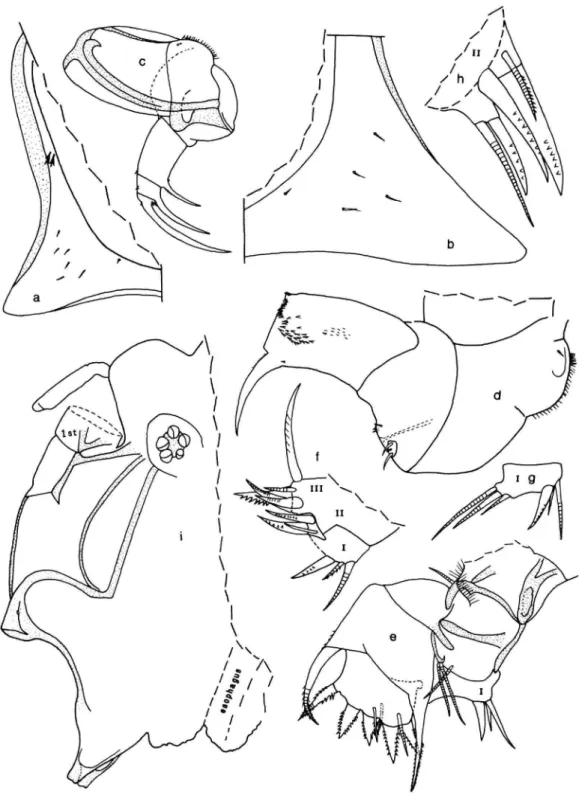
N Castle
Harrington Sound
2nd joint with 3 dorsal setae (1 long and 2 short, translucent), and a total of 6 ventral and terminal setae with proximal rings (one of them with some long proximal spines, others glabrous or with some short proximal spines); 3rd joint with sclerotized hook-like clamping organ (with rounded tip and tiny distal ridges on the concave edge) and 3 setae (proximally annulated and with some widely spaced marginal spines on the annulated part). 8th joint with 2 bristles with widely spaced marginal spines (longer bristles about the same length as bristles of the 7th joint, shorter bristles about xh length of longer bristles). Endopodite differs from that of adult females in that it has a first joint with 1 ventral setae (at the mid-length of the joint) and 1 dorsal setae (distal).
Organ of Bellonci (Fig. 35b), upper lip, posterior part of body (Fig. 35c): Similar to adult female. 1st joint with 3 setae on or near ventral margin and 1 distal, long, spiny, dorsal seta; 2nd joint with 2 setae similar to those of adult female. Organ of Bellonci (Fig. 36c,d), upper lip, posterior part of body (Fig. 36c): Similar to adult female.
Endopodite: 1st joint with 2 or 3 spinous ventral hairs and 1 long, spinous, distal, dorsal hair; 2nd joint similar to that of adult female. Endopodite: 1st joint with 2 spinous ventral bristles; 2nd joint with 1 spinous dorsal bristle and 3 ventral bristles (1 short, 2 long); 3rd joint with 4 hairs (2 with long marginal spines). 6th joint with 1 short dorsal bristle and 3 ventral bristles (shorter 2 very slightly wider in proximal unringed part than in normal uniformly tapering bristles).
Endopodite: 1st joint with 3 spinous ventral bristles and 1 long spinous distal dorsal bristle; 2nd joint corresponding to that of an adult man. 1st joint with 2 spinous ventral bristles; 2nd joint with 1 dorsal bristles and 3 ventral bristles (1 short slender, 2 long stout); 3rd link with 4 brushes. Exopodite with 8 joints: joints 1-7 each with long bristles; joint 8 with 2 bristles (1 small, 1 shorter than bristles in other joints).
2nd joint with 2 terminal ventral setae (bolder of these with 4 or 5 long proximal dorsal setae, about 6 stout, distal, widely spaced ventral spines and numerous, slender, distal, dorsal setae) and 1 slender dorsal setae; end connection with 3 long bristles. Endopodite: 1st joint with 2 distal dorsal setae and 1 (possibly 2) ventral setae; terminal connection with 2 bristles (dorsal bristles somewhat claw-like). 2nd joint with 2 dorsal setae (longer setae with some long proximal setae) and 3 long ventral setae (marginal setae not observed); terminal joint with 3 long sturdy bristles (dorsal of these with long proximal bristles).
Endopodite with single small joint with 2 bristles (anterior bristle broad, short, hirsute; posterior bristle slender, about twice length of anterior bristle). Organ of Bellonci (Figure ASh), Furca and Posterior of Body (Figure 48*): Similar to that of an adult male.
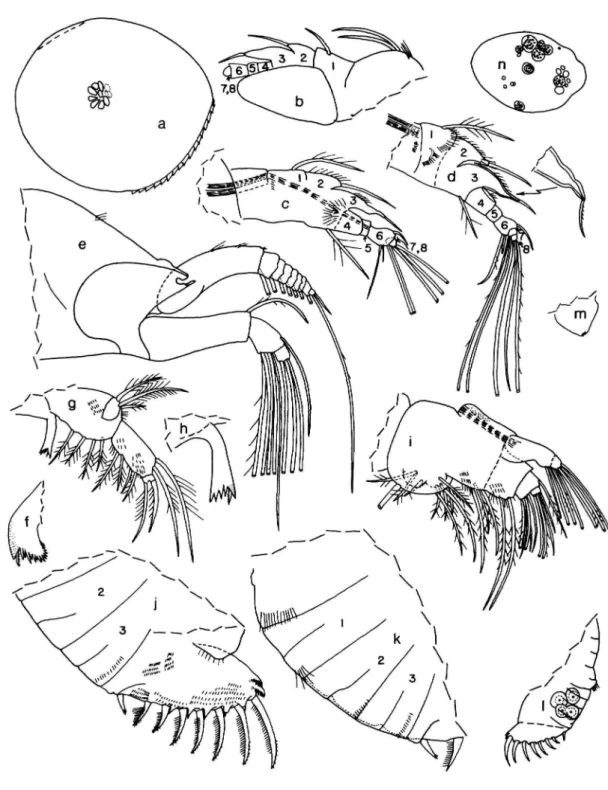
A monograph of the marine and freshwater Ostracoda of the North Atlantic and Northwest Europe. Transactions of the Institute of Marine Biology, Far East Science Center, Academy of Sciences of the USSJi. On the Systematic Position of the Modern Ostracoda in the Family Polycopidae (Ostracoda, Cladocopinae).] Trudy Institute Okeanologiia, 115:53-60.
Vladivostok: Academy of Sciences of the USSR, Far Eastern Science Center, Institute of Marine Biology. Ostracods of the family Polycopidae (Cladocopina) from the Far East Sea and adjacent Pacific regions. Two new shrimps (Procarididae and Agostocarididae, new family) from Marine caves of the Western North Atlantic Journal of Crustacean Biology figures.
A new species of the genus Sarsiella Norman from Hokkaido, with reference to the larval stages (Ostracoda: Myodocopina). A new species of the genus Bathyleberis Kornicker from Hokkaido, with reference to the larval stages (Ostracoda: . Myodocopina). Rutidenmatidae of the continental shelf of southeastern North America and the Gulf of Mexico (Ostracoda: Myodocopina).
Philomedidae manipud iti kontinental nga estante ti daya nga Amianan nga Amerika ken ti akin-amianan a Golpo ti Mehiko (Ostracoda: Myodocopina). Ti Sarsiellidae ti akindaya nga Atlantiko ken akin-amianan a Golpo ti Mehiko, ken rebision ti Sarsiellinae (Ostracoda: Myodocopina). Cylindroleberididae ti akindaya nga Amianan nga Atlantiko ken akin-amianan a Golpo ti Mehiko, ken zooheograpia ti Myodocopina (Ostracoda).
An account of Norway's crustaceans with short descriptions and figures of all the species. Synonymy in zoology should use the short form (taxon, author, year: page), with the full reference at the end of the paper below. Extensive notes should be collected and placed at the end of the text in a notes section.
